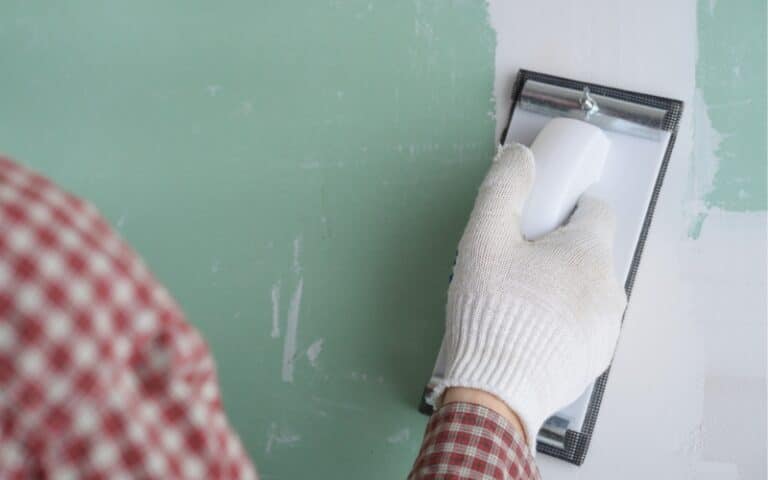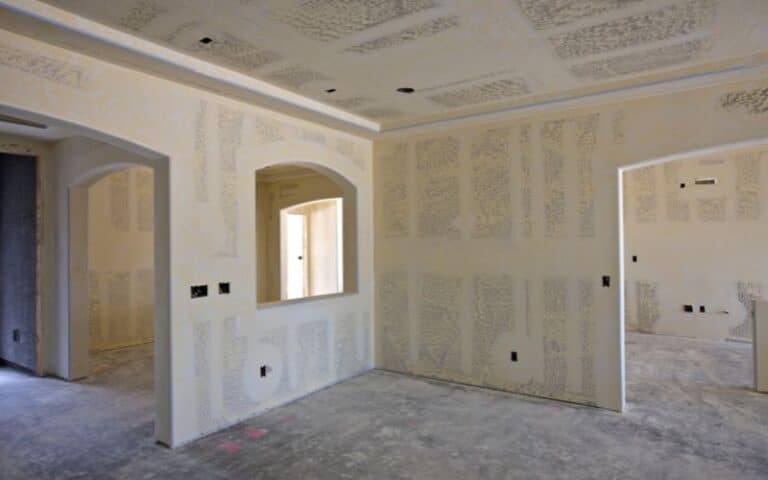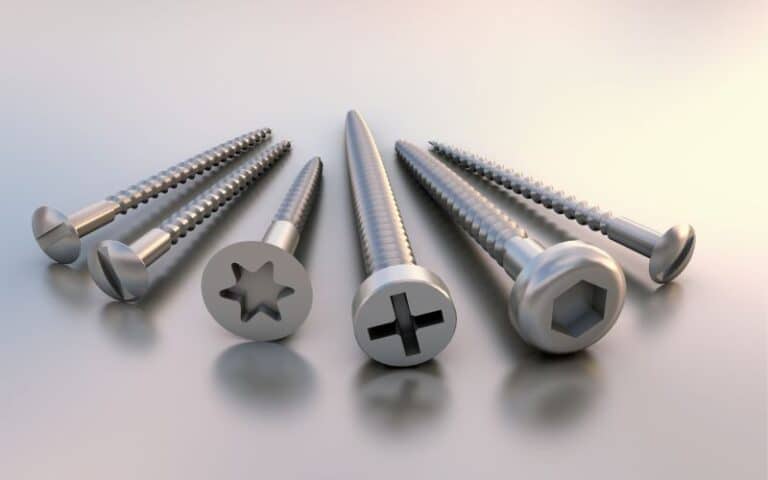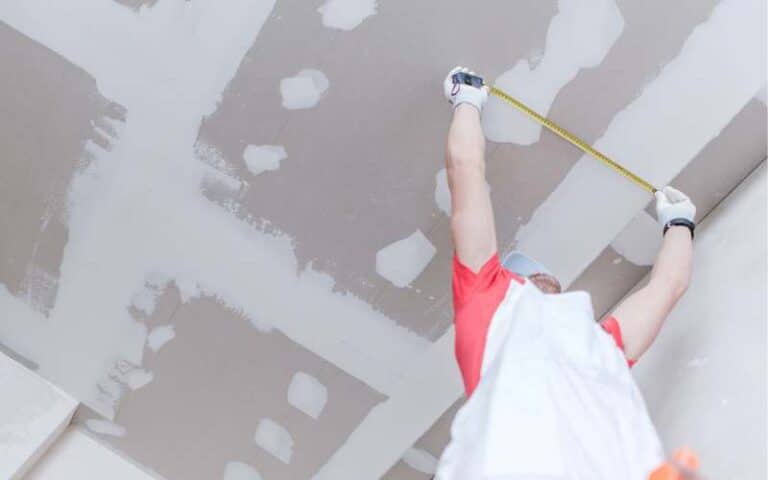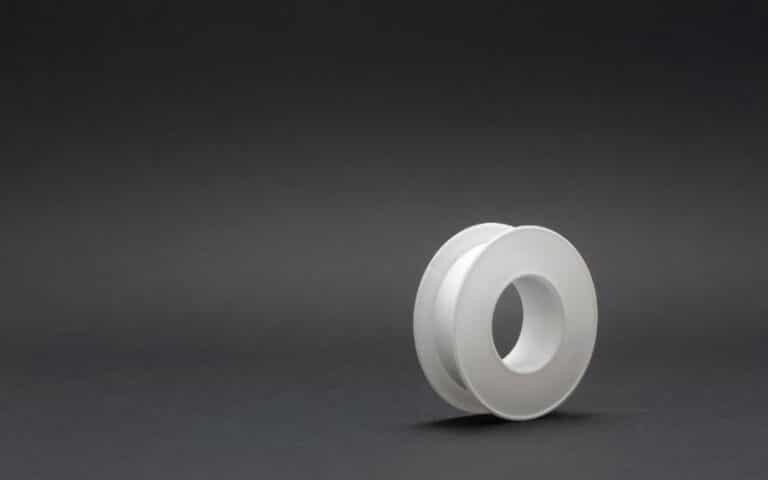Finishing drywall requires several steps, such as mudding, taping, and coating the boards so that the walls and ceilings appear uniform.
A quality drywall finish, including the corner bead that provides structural and cosmetic benefits, results from using a small set of equipment and a few supplies.
Yes, you can drywall without a corner bead. Due to the susceptibility of corner beads, they are almost always restricted to usage on the outside corners of a structure; therefore, corner beads are not mandatory since a simple application of paper tape would do.
This guide gives a detailed overview of corner beads, their uses, and other viable alternatives in their place.
Ready for a Drywall Quiz?
What Are Drywall Corner Beads Used For?

A drywall corner bead is an angled trim piece often attached at right angles to the wall to finish off the intersection of two outside drywall boards.
The corner bead helps to finish drywall in two ways. First, it gives structural support to corners.
Secondly, it hides the joint between two pieces of drywall that would make the corner look bad if exposed.
Since corner bead is susceptible to wear and tear, it is good on the exterior corners of a building.
Although corner beads serve on the inside of a corner, a simple application of paper tape can achieve just the same thing.
For your finishing projects, you can choose from many different types and styles of corner beads listed below:
#1. Metal
Corner beads are often of metal because of their longevity and durability.
Even if the installed drywall wasn’t perfectly symmetrical, you could use metal corner beads to conceal imperfections in the board edges and produce a smooth 90-degree angle.
Metal corner beads are the most time-consuming to set up since their thickness necessitates using more joint compounds than usual.
Beads made of metal are of two basic shapes: the square (90 degrees) and the bullnose (rounded edge). In addition, metallic and composite materials can make paper-faced beads.
#2. Paper-faced Metal
Paper-faced Metal boasts durability and simplicity of installation; it consists of a metal core covered with paper.
The installation time for paper-faced metal corner bead is far lower than that of its metal counterpart; however, it could be more effective at hiding drywall imperfections.
Square and bullnose forms of paper-faced metal are readily accessible.
#3. Paper-faced Composite
These paper-coated beads have a plastic interior. As a result of its thinness, it can be set up in a short amount of time and with little mud.
You shouldn’t use paper-faced composite unless your drywall is exactly straight since it will reveal any imperfections.
Square, bullnose, and tiny bullnose are all examples of paper-faced composite forms.
#4. Vinyl
When it comes to corner beads, vinyl offers the most variety. The arch bead can be bent and shaped to accommodate different trim sizes due to its notched sides.
Vinyl corner beads can be installed in several ways, but spray adhesive, and drywall staples are usually what manufacturers recommend.
Can Tape Replace Corner Beads for Drywall?
Yes, the tape can replace corner beads for drywall. Paper tape coated in joint compound spread out to form a smooth edge is the most effective method for creating an inside corner bead for drywall.
Also, metal-reinforced drywall tape can be stretched horizontally and placed along the corners of walls inside and out.
Taping the seam between two drywall sheets is an important first step before using a joint compound to connect the sheets.
A joint compound, commonly known as mud, can ideally be inserted into the seam by itself. However, the two sheets will ultimately become loose, which will cause the joints to break slightly.
Then there will be a gradual disintegration of the assemblage’s joints. Then finally, the joints also require drywall tape, and the mud can do its job.
Here is a list of a few different types of tape used to replace corner beads on your drywall:
#1. Paper Drywall Tape
When making inside corners with paper tape, a small crease along the length of the tape makes it easier to fold along the center.
Even though it takes practice to learn how to work with paper tape, the bedding process, which involves putting a thin strip of drywall mud on the wall, must be done first.
The joint tape is then applied, and the area is carefully pressed to prevent air bubbles. Afterward, apply the last coat of mud after it has dried for a few hours.
#2. Metal Drywall Tape
Metal drywall tape is a standard metal-reinforced paper. Instead of regular paper tape, you should use two strips of extremely thin metal, laid end to end and separated by a little margin.
This joint drywall tape is an inside corner bead tape because it goes on smooth surfaces or outer corners. It is thus considered to be a specialized material.
#3. Fiberglass Mesh Drywall Tape
Since its emergence, fiberglass mesh drywall tape has been considered the perfect substitute for paper drywall tape.
Since its fiberglass strands braid together to resemble tape, mesh drywall tape is almost impossible to tear.
While it is thicker than joint paper tape, it also has some negative qualities, such as being sticky and hard to handle.
#4. Ultra-Thin Fiberglass Drywall Tape
Ultra-thin fiberglass tape looks like a fine mesh and significantly advances over traditional, bulky mesh-like fiberglass tape.
As the number of threads increases, the number of spots where they meet also increases. This increase makes the tape more durable than traditional drywall tape, which has a coarser mesh.
Can You Caulk Drywall Corners Without Beads?
Yes, you can caulk drywall corners without beads. Although using inside corner beads is the most effective approach for completing drywall corners without paper tape, there is a steel angle within the corner bead with tape already adhered to it.
After it fits easily into the corners and holds in place with screws, you can put a joint compound on it.
Crown molding can conceal spaces between the ceiling and the walls if you don’t want to use inside corner beads.
Also, If you don’t want to use tape and joint compound to hide these edges, you can use quarter-round trim instead. Finally, you can use caulk to complete any corners swiftly.
How to Use Corner Beads for Drywall?
While some drywall finishers prefer to put the corner bead before the tape, it is standard practice to tape the corners before installing it.
Although it is all dependent on what you desire.
Methods for using paper-faced metal and composite corner beads are detailed below;
#1. Paper-faced Metal Corner Bead
- Apply a thick coating of tape mud along the edge of the drywall corner.
- To attach the corner bead, place it in the central portion of the corner and push down hard on it.
- Drain off any residual mud and fasten the corner bead to the wall by rolling over the middle of the bead with a corner roller tool.
- Remove any lingering muck with a damp cloth. Next, the taping compound should be applied to the paper tape using a drywall knife.
- You can then cover the tape. Let it dry completely before applying another layer.
#2. Paper-faced Composite Corner Bead
- Apply a thick coating of tape mud along the edge of the drywall corner.
- Place the corner bead to align with the middle of the corner, and then firmly push it into the mud.
- Remove any extra mud with a drywall knife.
- When applying a small layer of tape compound to the corner bead, make sure it is completely dry.
#3. Pros and Cons of Paper Drywall Tape
Below is a table highlighting the pros and cons of using drywall tape when installing drywall.
| Pros | Cons |
|---|---|
| Less expensive | Presence of bubbles |
| Used across various countries | Prone to punctures |
| It can be ripped off | Requires mud layer |
| Comparable to drywall | Less durable |

